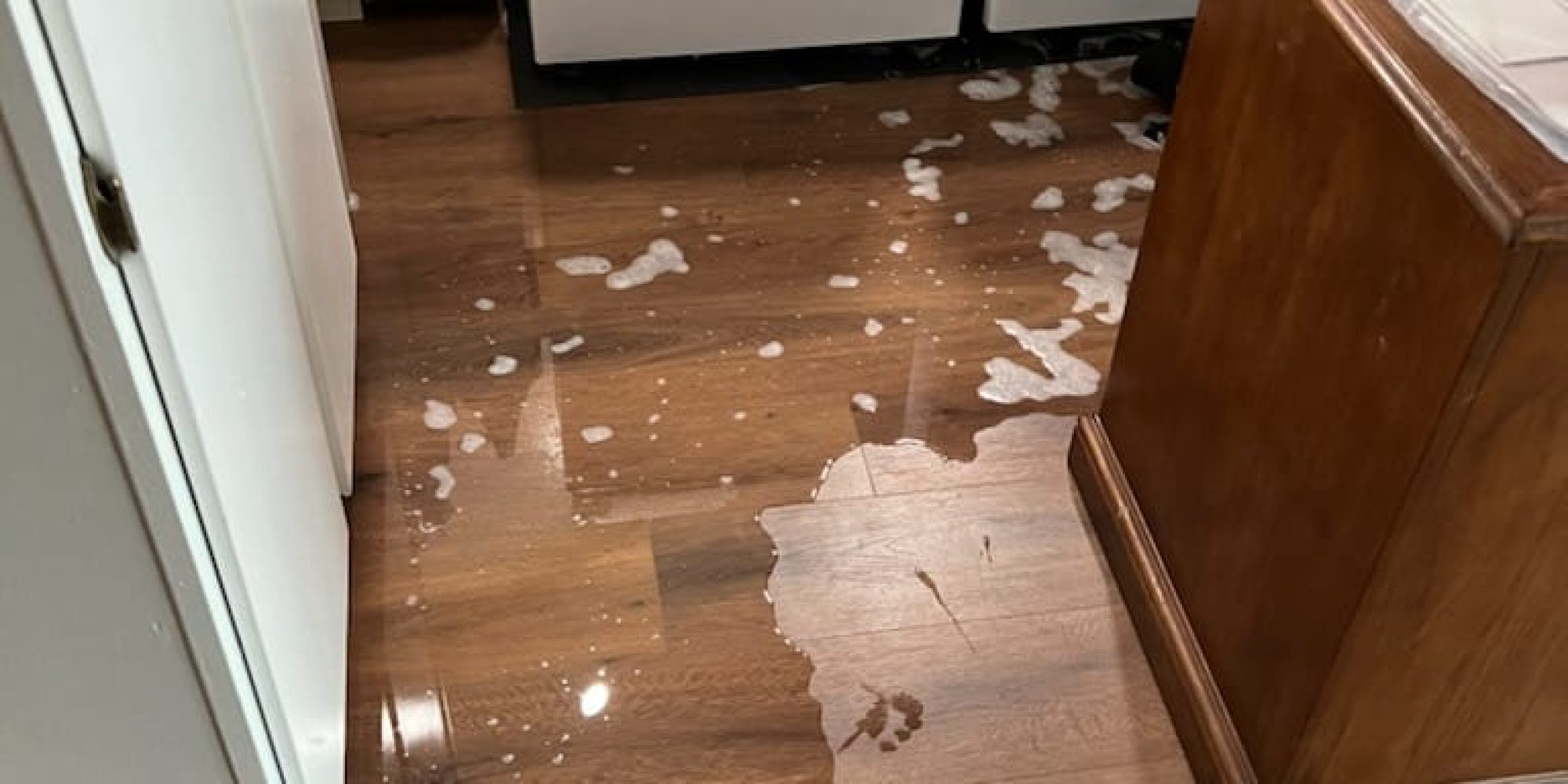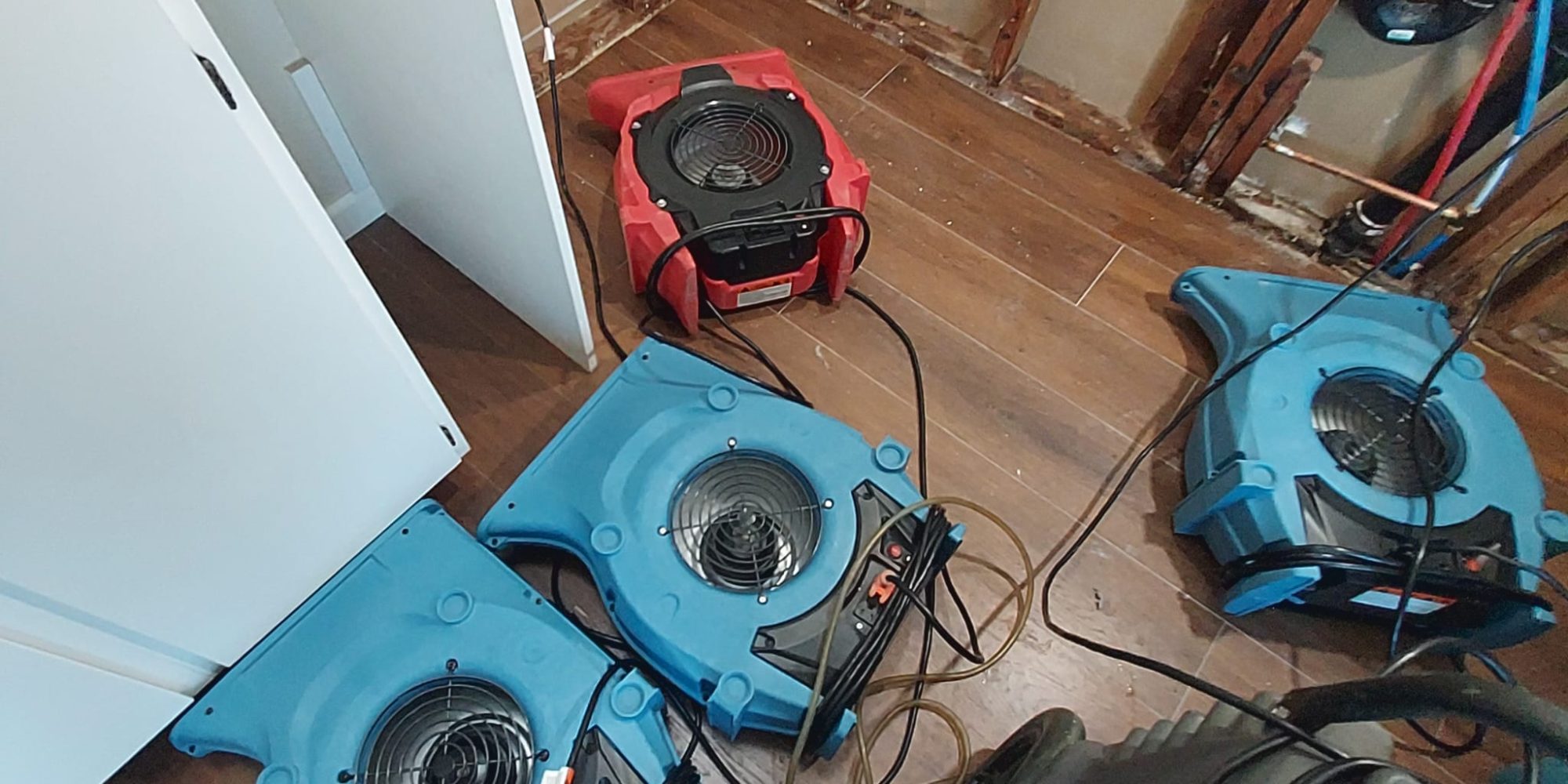When water invades your home or business — whether from a burst pipe, a roof leak, or a natural flood — it can create chaos within minutes. Walls soak up moisture, flooring begins to warp, and the longer water lingers, the more severe the damage becomes.
In the middle of this stressful situation, you’ll often hear professionals mention “water damage mitigation” and “water damage restoration.” While the two terms sound similar, they refer to distinct but connected stages of recovering your property.
Understanding the difference between mitigation and restoration helps you respond faster, make informed insurance claims, and ultimately reduce the total cost of repairs.
What Is Water Damage Mitigation?
Water damage mitigation is the emergency response phase that happens immediately after a leak, flood, or plumbing failure. The goal here is simple but critical:
Stop the damage from getting worse.
Mitigation does not involve major repairs — instead, it’s focused on controlling and minimizing the effects of the water intrusion.
Key Objectives of Mitigation
Remove Standing Water Quickly:
Technicians use industrial pumps, wet vacuums, and extraction tools to eliminate pooled water from floors, carpets, and basements.Dry the Structure Thoroughly:
Air movers, dehumidifiers, and moisture meters are used to dry out building materials and prevent trapped moisture that could lead to mold growth.Stabilise the Property:
Technicians may board up broken windows, cover damaged roofs, or remove soaked drywall and insulation to stop further structural deterioration.Prevent Mold and Odor:
Antimicrobial treatments and odor control products help ensure that bacteria and mold don’t take hold during the drying process.
What Happens During the Mitigation Process
The mitigation team will inspect the property to assess the type of water involved (clean, gray, or black water) and the level of contamination. Based on this, they’ll set up specialized equipment to control humidity and airflow.
In many cases, they’ll also photograph and document the affected areas for your insurance company. Mitigation generally lasts 24 to 72 hours, depending on the size of the property and the amount of water involved.


What Is Water Damage Restoration?
Once mitigation is complete and your home is dry, the restoration phase begins. Restoration focuses on repairing, rebuilding, and returning your property to its pre-damage condition — or better.
If mitigation is about control, restoration is about reconstruction.
Main Steps in the Restoration Phase
Material Replacement and Repairs:
Damaged drywall, flooring, insulation, or cabinets are replaced. Walls are repainted, trim is reinstalled, and new flooring may be laid down.Deep Cleaning and Sanitisation:
All surfaces are disinfected to remove potential bacteria, and lingering odors are neutralized using ozone or hydroxyl generators.Structural and Cosmetic Restoration:
Restoration may also include major repairs such as fixing framing, replacing subflooring, or reinstalling electrical and plumbing systems.Final Inspection and Testing:
Before the project is considered complete, air quality tests and moisture readings confirm that the property is fully safe and dry.
Mitigation vs. Restoration: Side-by-Side Comparison
| Aspect | Mitigation | Restoration |
|---|---|---|
| Primary Goal | Stop further damage and stabilise the site | Repair and rebuild the affected property |
| Timing | Immediate — starts within hours of water intrusion | Follows mitigation after drying is complete |
| Focus | Extraction, drying, cleaning, and protection | Repairing, replacing, and refinishing |
| Duration | 1–3 days typically | Several days to weeks depending on damage |
| Professionals Involved | Water mitigation specialists | Restoration contractors and builders |
| End Result | Safe, dry structure ready for repairs | Fully restored home or business |
Why You Need Both Steps
Many homeowners think once the water is removed, the job is done. Unfortunately, that’s not the case.
If you skip mitigation, moisture can remain hidden behind walls or under flooring, leading to mold, odor, and even structural rot weeks later. On the other hand, skipping restoration leaves your property incomplete and potentially unsafe for occupancy.
Together, these two stages form a complete recovery system:
Mitigation saves your structure.
Restoration saves your investment.
The Financial and Insurance Impact
Insurance companies often view mitigation as an emergency service and expect it to happen immediately. Delays can sometimes invalidate parts of your claim because preventable secondary damage isn’t covered.
Restoration, on the other hand, may require a separate estimate and approval process. To make the process smoother, choose a company that can handle both mitigation and restoration under one roof — they’ll coordinate directly with your insurer and streamline the recovery.
Real-World Example: Why Timing Matters
Imagine a homeowner experiences a burst pipe in the ceiling while away for the weekend. By the time they return, water has already soaked through the drywall and carpet.
If mitigation begins within hours: Technicians extract the water, dry the structure, and prevent mold growth.
If it’s delayed for days: Mold develops, materials deteriorate, and the total cost of restoration doubles or even triples.
Early mitigation can literally cut repair costs by 40–60%.
Final Thoughts: Respond Fast, Restore Smart
Water damage can happen in an instant — but recovery depends on what you do next.
Mitigation is the first step that stops the spread of damage, while restoration ensures your property returns to normal safely and efficiently.
By understanding both stages and acting quickly, you protect not only your home’s structure but also its long-term value and safety.
If your property ever suffers from water damage, contact a certified water mitigation and restoration company right away. Their expertise, tools, and quick response can make all the difference between a minor setback and a major loss.
No. Even a small leak can create hidden moisture behind walls or floors. Skipping mitigation often leads to mold or structural weakening later.
Restoration begins once all moisture tests confirm the property is dry and stable — usually within 24 to 48 hours after mitigation.
Yes, in most cases. However, your policy type (homeowner’s, renter’s, or commercial) and the cause of the damage (flood, storm, burst pipe) affect coverage. Always report water damage immediately to your insurer.
If the affected area is larger than a few square feet or if the water comes from an unknown or contaminated source, call professionals. DIY drying often misses hidden moisture pockets.
